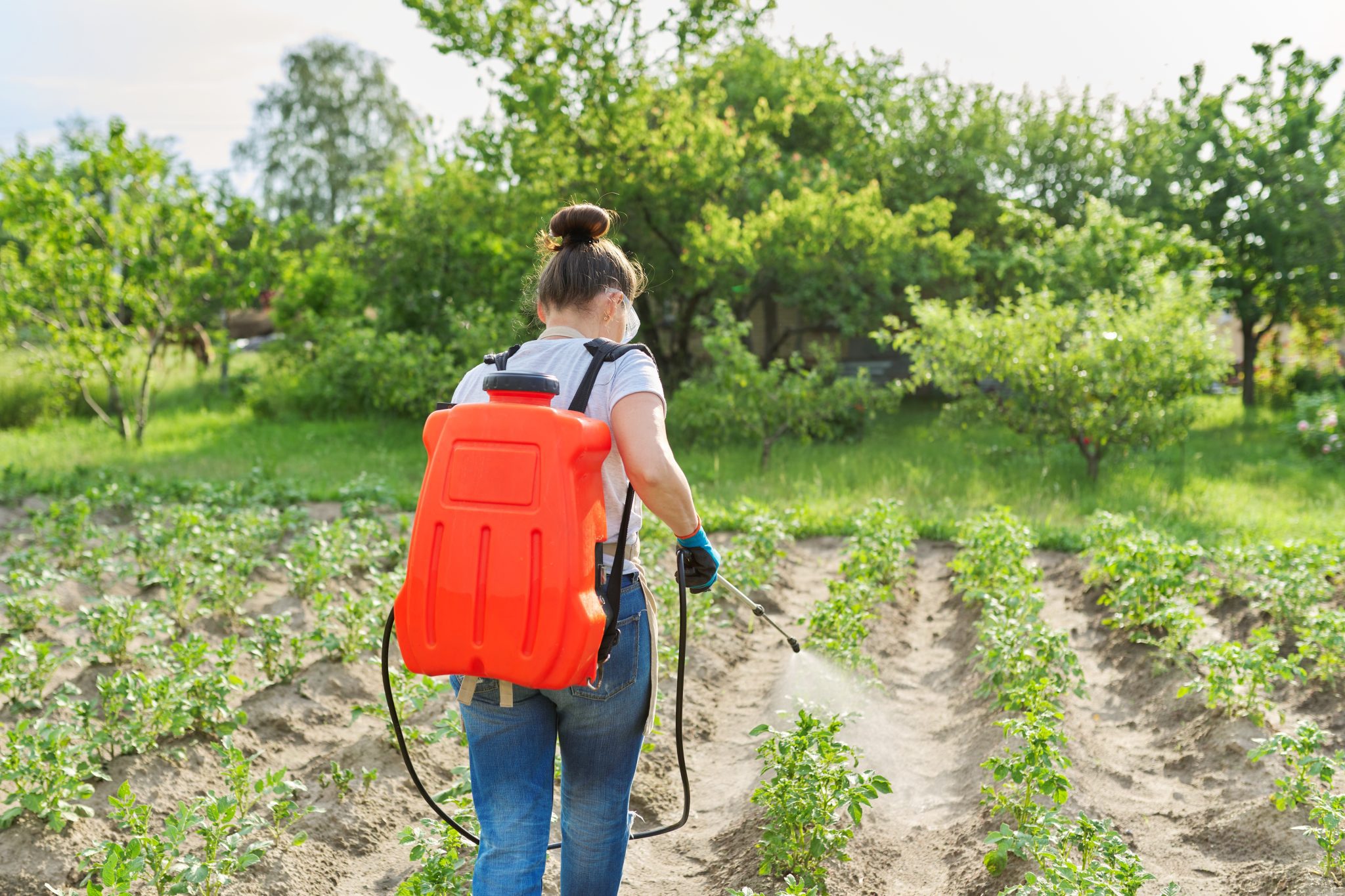Crop Production

Sprayer calibration is an important step when applying pesticides. Lots of sprayers are used in agriculture including boomless sprayers, air blast sprayers, and boom sprayers. Handgun sprayers are common on large sprayers powered by a tractor’s PTO, battery powered sprayers used on ATVs, and smaller hand pump sprayers.
Determining Pesticides Per Acre
It is extremely important to understand sprayer calibration before applying pesticides. For farmers and other professionals, the pesticide label will explain how much of the pesticide to apply per acre. Years ago, it was common for home garden products to recommend a certain amount of pesticide to be applied per gallon of water. With this method, one person may apply much more pesticide on a certain area than another, even if the pesticides were mixed the same. For this reason, it is now common for the label to recommend a certain amount of pesticide on a certain area. An example of this may be a recommendation to apply 2 ounces of pesticide per 500 square feet or per 1500 square feet.
So how much pesticide should be put in a tank? First, determine how many gallons of water you are applying per acre, then calculate how much pesticide to add to the tank. In this example we will use the 1/128 acre method, but other methods could be used. This method discussed here is for the handgun or wand applicators and does not matter if your sprayer is a handheld sprayer, backpack sprayer, ATV sprayer, or a larger sprayer mounted on a tractor.
Step-by-Step
First, measure 1/128 of an acre, which is about 340 square feet or 18.5 feet by 18.5 feet. Use flags, string, spray paint, etc. to mark the area. Then, with only water in the tank, measure the time required to spray the area. The goal is to apply the water consistently, so try it several times until you determine your average time. Wetting the area more or less will change the calibration rate. The goal is to spray the same way in the field as you did while calibrating. Then, spray the water in a container for the length of time it took to spray 340 square feet and measure the ounces caught. The ounces caught in the time required to spray the 340 square foot area equals the gallons of water the applicator is applying per acre. For example, if it took 23 seconds to spray a 340 square foot area, spray will be collected for 23 seconds and measured in ounces. If 50 ounces were caught, the applicator would be applying 50 gallons of water per acre. If 15 ounces were caught, the applicator would be applying 15 gallons per acre. To adjust the gallons of water per acre, change pressure at the pump, change or adjust spray tips, or adjust the speed. Then repeat the calibration process until you are applying the desired amount per acre. Once you are applying the desired volume of water per acre, you do not need to adjust the pressure, tips, or speed.
Once you calculate the area that can be covered with one tank, you can determine the amount of pesticide needed per tank. The pesticide label will give a range of desired gallons of water per acre that is needed to be applied along with the recommended rate of pesticide. If an applicator is applying 30 gallons of water per acre and the label recommends 16 ounces of pesticide per acre, how much pesticide would go into a 4 gallon tank? First divide 4 by 30 to get .133 which is the amount of acres covered with 4 gallons of spray. Then multiply .133 and 16 to get 2.1, which is the number of ounces of pesticide to add to a 4 gallon tank. If the applicator is applying 30 gallons per acre and the label recommends 2 ounces of pesticide per 1500 square feet, how much pesticide would be added to a 4 gallon tank? First, calculate how much water you are applying per square foot then multiply that number by 1500. At 30 gallons per acre, an applicator is applying .00068 gallons of water per square foot. Multiply that number by 1500 to get 1.0, which is the gallons of water that is being applied per 1500 square feet. For this example, for every gallon of water in the tank, you should add 2 ounces of pesticide.
Remember to read and follow the label directions before applying pesticides. It is not a bad idea to read the label before even purchasing the pesticide. On our website, there is information on pesticides that are labeled for certain crops, such as insects, disease, and weed control in turf, ornamentals, vegetables, fruit, forages, and other areas such as insects in wood structures.
More Information
For more information on sprayer calibration, just contact the County Extension office or visit the Alabama Extension website at www.aces.edu and type sprayer calibration in the search box.

